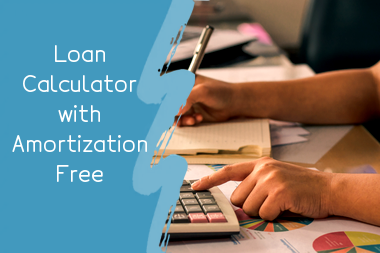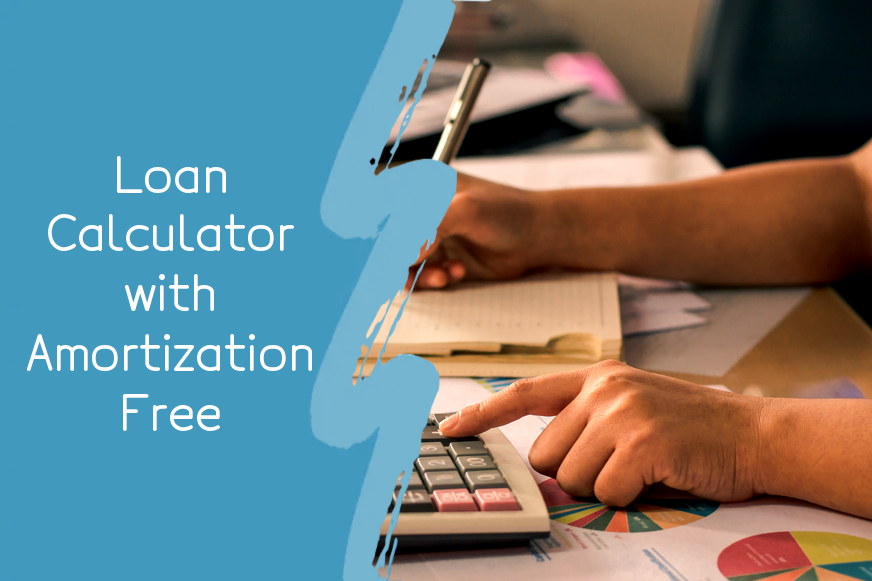The Free Loan Calculator with Amortization Schedule is a tool that helps you calculate the total cost of a loan and create a schedule of payments over the repayment term. This calculator is available online or can be downloaded as a software application. The basic features of the tool include:
- 1. Loan Amount: You enter the total amount of the loan you want to take.
- 2. Loan Term: You enter the length of the loan repayment period: weekly, monthly, or annually.
- 3. Interest Rate: You enter the interest rate assigned to the loan.
- 4. Payment Frequency: You select the payment frequency for the loan installments.
Based on these inputs, the calculator generates an Amortization Schedule that shows:
- 1. The total monthly payments with the breakdown of principal and interest.
- 2. The outstanding balance of the loan after each payment.
- 3. The date and amount of each payment.
- 4. The total interest paid over the course of the loan.
The Amortization Schedule helps you understand how much you need to pay each month and how the loan amount is being reduced over time. It also helps you calculate the total amount of interest you will pay on the loan. Therefore, the Free Loan Calculator with Amortization Schedule is a valuable tool for comparing loan options from different lenders, planning for future payments, and adjusting your budget accordingly.
Loan Calculator with Amortization Schedule
A loan calculator with an amortization schedule calculates the amount of money you need to pay back for a loan and provides a detailed schedule of your payments over time. This schedule breaks down each payment and shows how much of it goes towards paying off the principal amount borrowed and how much goes towards paying the interest charges.
The calculator takes into account the loan amount, interest rate, loan term, and payment frequency to provide an estimate of your monthly payments. It can also factor in any additional payments or any extra payments you plan to make towards your loan, which can help you save money on interest charges and pay off your loan faster.
The amortization schedule displays a table that outlines each payment period, the total amount paid, the interest paid, the principal paid, and outstanding balance. This schedule helps you understand how much of each payment applies to reducing your debt and how much is going toward interest.
Using a loan calculator with an amortization schedule can help you get a clear picture of your monthly payments, total paid, and the total cost of your loan. This information can be helpful when comparing different loan options, making informed decisions about borrowing, and creating a realistic budget to pay off your loan over time.
What Is Amortization?
Amortization is the process of spreading out a particular expense or cost over a set period of time. It is a common accounting practice used to reflect the reality that some expenses, such as the cost of a long-term assets like a car or a building, are not paid for in one lump sum but are instead paid for over time. The process of amortization involves breaking down the total cost of an asset into smaller, more manageable payments that can be spread out over the useful life of the asset. This helps to accurately reflect the true cost of the asset and to better match that cost with the revenue generated by using the asset over time. As a result, amortization enables companies to better track and manage their expenses, and to create more accurate financial statements that reflect their true financial position.
How Is an Amortization Schedule Calculated?
An amortization schedule is a table that shows how a loan is paid off over time through regular payments. It includes the principal amount, interest rate, payment amount, and balance remaining on the loan.
To calculate an amortization schedule, you need to know the loan amount, interest rate, and loan term. You also need to choose a payment plan, which can be monthly, bi-weekly, or weekly.
The first step is to calculate the monthly interest rate by dividing the annual interest rate by 12. Then, you need to calculate the monthly payment using a loan amortization formula or an online loan calculator.
This monthly payment consists of two parts: principal and interest. The principal is the amount of money borrowed, and the interest is the cost of borrowing that money.
In the initial months of the loan, the payment is mostly going towards the interest. As the loan progresses, the amount of interest decreases, and the amount of principal paid increases. This is because the interest is calculated based on the remaining balance of the loan.
The table will show the payment number, payment amount, interest paid, principal paid, and remaining balance. Each month, the remaining balance will be reduced until the loan is paid off completely.
An amortization schedule can be helpful for borrowers to understand how their payments are being applied to their loan and how long it will take to pay off the loan.
How Extra Payments Change Your Amortization Schedule
When you make extra payments on your loan, the additional payment amount is applied directly to the loans principal balance and not towards the interest. This reduces the outstanding principal balance on the loan, which in turn, reduces the amount of interest that is charged on the remaining balance during the next payment period.
As a result of the reduced interest amount, your monthly payment will also decrease. The extra payment increases the rate at which you pay off the loan, which shortens the loan term. The shorter loan term also means you will end up paying less interest over the life of the loan.
Your amortization schedule shows you the breakdown of each payment on your mortgage or loan, including how much of each payment goes towards principal and interest. Whenever you make extra payments, your amortization schedule will reflect the changes in your payment amount, the total amount of interest saved and the remaining balance on the loan. This means that your loan will be paid off faster and with less interest cost.
Today' Mortgage Interest Rates
In general, mortgage interest rates are the rates at which banks and other lenders lend money to individuals or businesses to finance the purchase or refinancing of a property. These rates depend on a variety of factors, including economic conditions, inflation, market demand, and the borrower's creditworthiness and financial stability. Mortgage interest rates can fluctuate daily or within a week, and consumers should stay informed by regularly monitoring the latest rates and consulting with a financial professional to determine the best course of action regarding their mortgage.
Just one more thing: if you liked the article, please like us on social media and share this article with friends.



